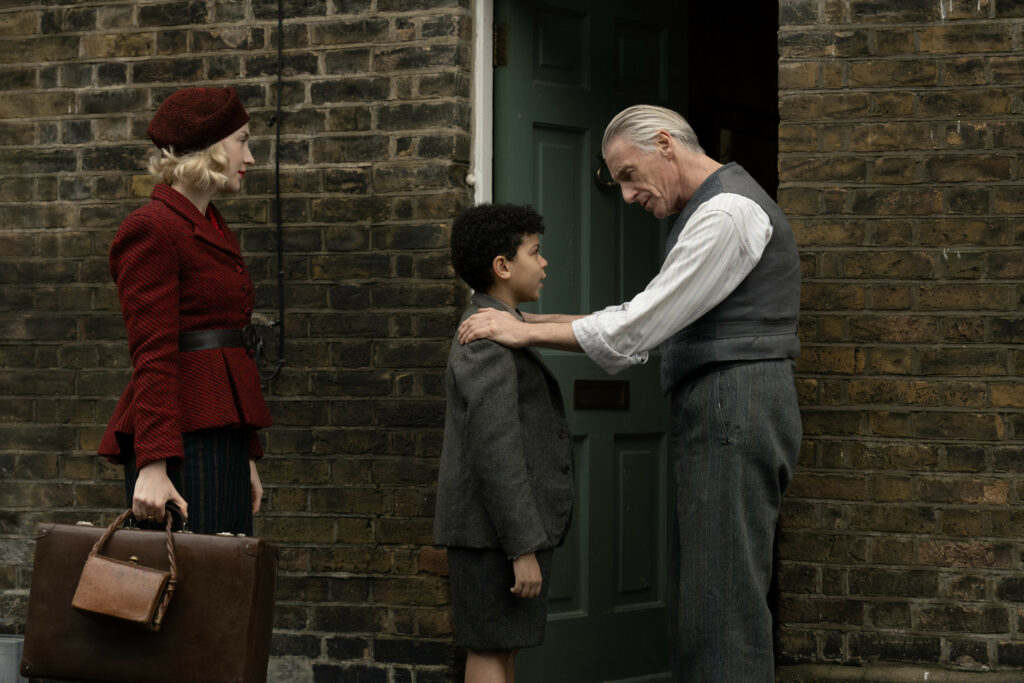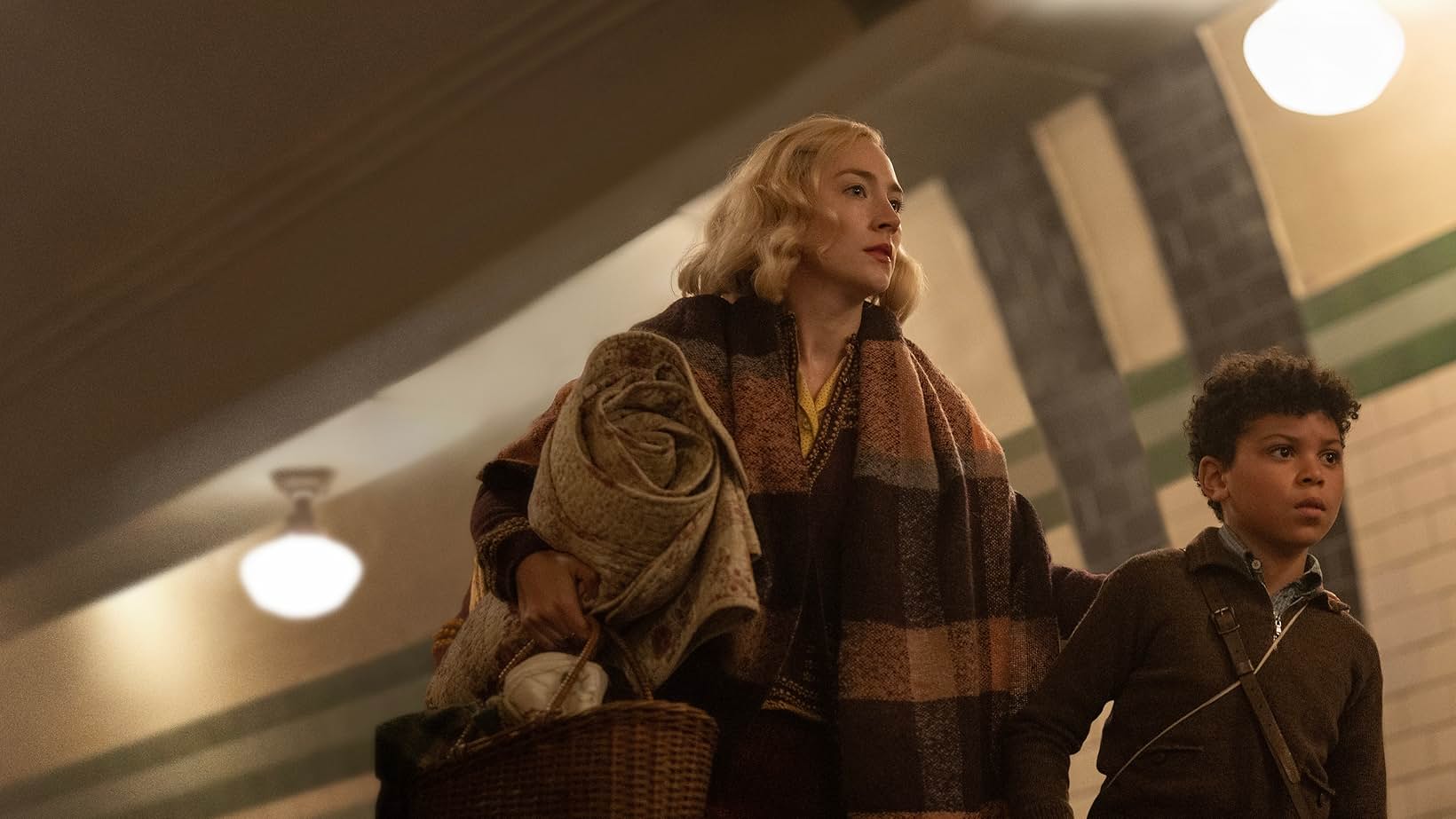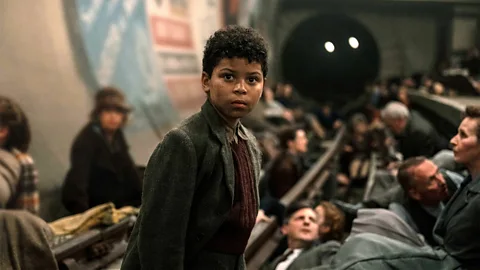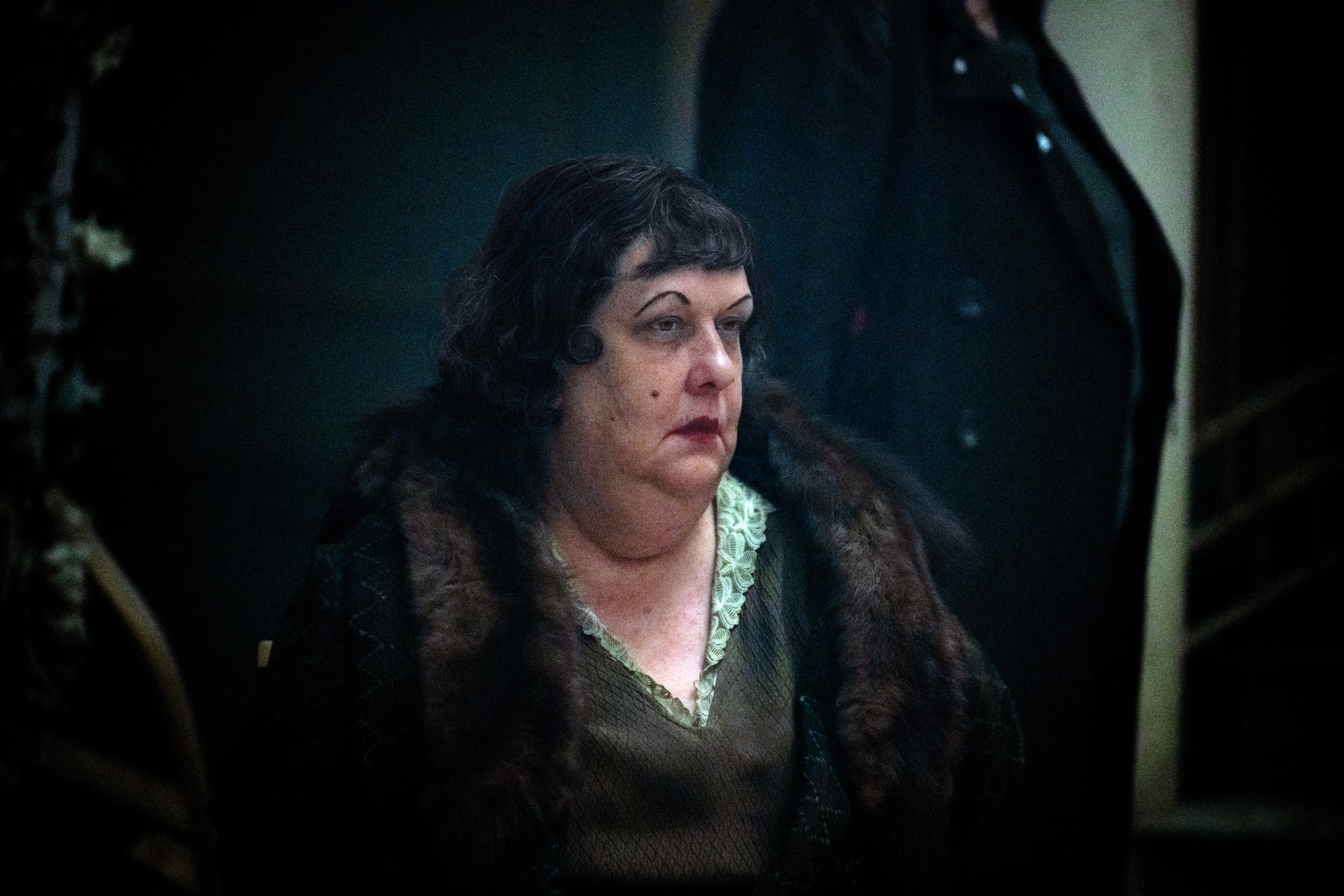Blitz, set on a vast CGI canvas in September 1941, is an improbable boy’s adventure tale that depicts the misery and terror that was inflicted on East Londoners by Germany’s eight-month bombardment. The enemy in the movie is not airborne, however. Writer-director Steve McQueen made it to educate audiences about contemporaneous white racism in Britain – proof that not all the British pulled together during the time of total war.
It's a timely film given the race riots and hate crimes stoked by far-right agitators this summer – when would it not be timely? It gets its vital message across, despite being an unwieldy epic that forsakes character development for didacticism.
Nine-year-old George (newcomer Elliott Heffernan) is the son of a munitions worker, Rita (Saoirse Ronan), and a Grenadian man, Marcus (CJ Beckford), who was deported before George was born. George and Rita live with her taciturn dad, Gerald (Paul Weller, to the manner born), in Stepney Green. With the Luftwaffe stepping up its onslaught, Rita has George evacuated to the countryside; such is the bond between them that he tells her he hates her for sending him away. (Pictured below: Saoirse Ronan, Elliott Heffernan, Paul Weller)
 On the train, George recalls Gerald’s advice to him to stand up for himself and faces down a couple of jeering boys; the little girl sitting opposite him is predictably supportive. George then jumps from his carriage and catches a ride, with nary a scratch, on a moving London-bound goods train. He instantly forms a Just William-like gang with the three likeminded boys already occupying his van. A risk they take for a lark gives Blitz a Saturday morning pictures vibe, circa 1965.
On the train, George recalls Gerald’s advice to him to stand up for himself and faces down a couple of jeering boys; the little girl sitting opposite him is predictably supportive. George then jumps from his carriage and catches a ride, with nary a scratch, on a moving London-bound goods train. He instantly forms a Just William-like gang with the three likeminded boys already occupying his van. A risk they take for a lark gives Blitz a Saturday morning pictures vibe, circa 1965.
Lest Rita come across as an ordinary working-class mum, McQueen has blessed her with a golden voice, so she's chosen to sing live (albeit a bit shakily) on the wireless when a snooty BBC presenter (Alex Jennings) brings his crew to record a show at her factory. After she's done, her fellow women workers seize the mic and protest to the nation the authorities’ inadequate provision of bomb shelters.
Conflicts in Blitz are neither personal nor psychological, but social: whites vs. non-whites; the authorities vs. the people (as embodied in the East Enders' daily struggle to be allowed to sleep overnight in the tube stations); the upper class vs. the proles (as embodied in the BBC's patronising of the munitions workers and anger at their protest).
Testifying to Rita’s passion as a young woman who couldn’t care less what the neighbours thought, flashbacks show her and Marcus jitterbugging in a Black nightclub around 1930, and Marcus subsequently being arrested after trying to defend himself from a racist attack. A decade on, Rita is a careworn mother, troubled by George's departure, and therefore a damp squib when she goes to the pub with her mates (Hayley Squires hits the right note as salty, man-mad Tilda). That Rita’s arc in the film is entirely retrospective – she’s unconflicted in its present tense – largely nullifies her. Ronan, the film's star, has to play Rita without agency or the need to change, so she is reduced to showing her fretting, crying, and being rescued from a perilous situation by the shy young constable (Harris Dickinson) who often looks at her longingly.
George, a mettlesome lad to begin with, sees and learns a lot, but he doesn’t evolve either, except to regret his parting words to Rita. Because the hellish hazards he has to survive to get back to Rita and Gerald are external, Blitz is not that emotionally involving. But Heffernan (pictured below with Ronan and below right) makes George such a relentless, manly little tyke – such a watchable hero – that kids who evade the film's 12A rating might disagree.
 Threading homewards across London, George stops to gaze at a circular model railway layout – an obvious symbol of his journey – in Hamley’s on Regent Street, which presumably dates the film to before September 11, when a 550 pound UXB (later detonated) meant that the area had to be cleared. The boy’s eyes are opened to historical racism when he finds himself in a posh arcade where decorative objects in the shops are painted with images of enslaved Africans and other offensive archaic imagery.
Threading homewards across London, George stops to gaze at a circular model railway layout – an obvious symbol of his journey – in Hamley’s on Regent Street, which presumably dates the film to before September 11, when a 550 pound UXB (later detonated) meant that the area had to be cleared. The boy’s eyes are opened to historical racism when he finds himself in a posh arcade where decorative objects in the shops are painted with images of enslaved Africans and other offensive archaic imagery.
A kindly African-born warden, Ifi (Benjamin Clémentine), takes George under his wing, teaches him about black pride, and stops a bigot trying to impose segregation on fellow shelterers. Less saintly than Ifi is a Black woman, Jess (Mica Ricketts), who offers to buy hungry George a sandwich, but lures him instead into a den of Dickensian thieves – Kathy Burke channelling Mrs. Gamp and Stephen Graham an extra-demented Bill Sikes. They set George to squeezing his small frame into bombed stores to loot them; white wardens investigating a jeweler’s shop, where George hides from them, also help themselves. George next witnesses Burke and Graham’s characters desecrating dead toffs for their rings following the bombing of the Café de Paris in the West End. By then, Jess has shown regret for bringing George to these ghouls, which makes her one of the more interesting characters.
 Cinematographer Yorick Le Saux (with the CGI team) shot falling bombs from a few feet beneath them – a sickening sight. The artist in McQueen punctuates scenes abstractly – a black and white field of daisies morphs into the staticky air of bomb trails. Hans Zimmer’s dread-laden score merges with the drone and growl of fleetingly glimpsed Dorniers and Heinkels.
Cinematographer Yorick Le Saux (with the CGI team) shot falling bombs from a few feet beneath them – a sickening sight. The artist in McQueen punctuates scenes abstractly – a black and white field of daisies morphs into the staticky air of bomb trails. Hans Zimmer’s dread-laden score merges with the drone and growl of fleetingly glimpsed Dorniers and Heinkels.
Such flourishes cannot compensate for the lack of a credible, character-driven story. And the film's acting styles are inconsistent: Graham and Burke's extravagance is at odds with Ronan, Weller, and Dickinson's restraint, and with Clémentine's soulfulness.
If the mastery McQueen brought to landmark films like Hunger (2008), 12 Years a Slave (2013), and Small Axe (2020) is missing on Blitz, one magical realist sequence – or perhaps it’s a dream – reminds us of his imaginative power. When George wakes from his “bed” between the rails in a tube station and is drawn through a tunnel to the next station, he’s happy to find there some of the friends he’s made on his journey, a moment suffused with bittersweetness.
Blitz feels like a history lesson pitched at juveniles and foreign audiences who might be surprised to learn that London had a Black population back then; that children were evacuated en masse from industrial centres marked for destruction by Hitler and Göring; that the East End was devastated. McQueen emphasises that Britain’s fabled community spirit during the war – when strangers crossed class lines to help each other in ways uncommon in peacetime, fostering “the Myth of the Blitz” – co-existed with selfishness, greed, and rampant crime. (Pictured below: Kathy Burke)
 None of this is new to anyone who’s seen a single episode of Foyle’s War (2002–15), which addressed racism, anti-Semitism, and xenophobia, and the way criminals and petty thieves routinely manipulated wartime conditions to feather their nests at other people's expense.
None of this is new to anyone who’s seen a single episode of Foyle’s War (2002–15), which addressed racism, anti-Semitism, and xenophobia, and the way criminals and petty thieves routinely manipulated wartime conditions to feather their nests at other people's expense.
Anthony Horowitz’s exemplary detective series – the crimes it depicted based on real incidents – indicated that the looting of bombed businesses and houses, well known at the time, was a sordid inevitablity, human nature being what it is. In contrast, Blitz presents it as a revelation. Placing the March 1941 bombing of the Café de Paris during George’s journey in September 1940 is forgivable, but the film’s bracketing of the evils of looting and racism is problematic. The sociological drives behind them might be rooted in privation, but racism targets people – not inanimate objects.
- More film reviews on theartsdesk














Add comment